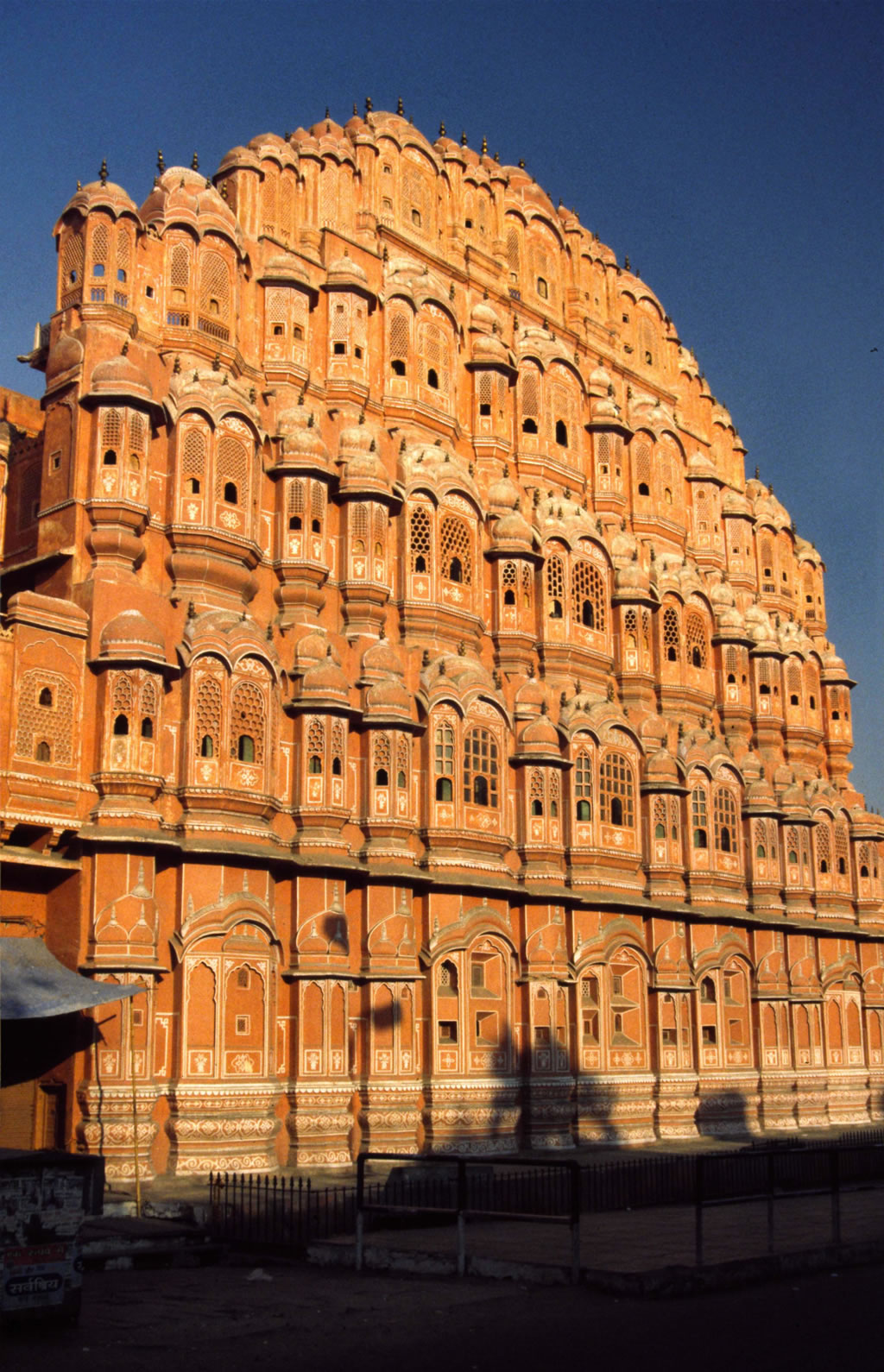The palace lies in the heart of the city and occupies the whole central grid. The fortified wall has seven gates and was built for protection from invading armies and animals that lived in jungles which surrounded the wall that time. Today, the city has spread beyond the walls and there is hardly any jungle left even in the vicinity of the walled city. It is a city of victory and capital of the desert State of Rajasthan and surrounded by rugged hills, each crowned by a formidable fort, a city of beautiful mansions and gardens.
Jaipur was color washed pink to create an impression of red sandstone buildings of mughal cities. The current color which is more red than pink was painted in 1876, during the visit of Prince of Wales. The city is best explored on foot and only the adventurous visitor willing to go into the inner lanes can feel the spirit of the city. There's an amazing appeal to Jaipur's colorful bazaars, beautifully laid out gardens, parks & the monuments.
The current population of the city is just under two million.
There are many sites to see in this city, but the more important ones are:
The City Palace: This is the former royal residence built in a blend of the Rajasthani and Mughal styles, situated in the heart of the old city. The palace houses a museum with a superb collection of costumes and armoury of Rajputs & Mughals and an art gallery with an excellent collection of miniature paintings, carpets and rare astronomical works in Arabic, Latin, Persian and Sanskrit. Many of these were acquired by Sawai Jai Singh II to study astronomy.
 Hawa Mahal: The ornamental facade of this "Palace of Winds" is a landmark in Jaipur. Built in 1799 AD, this five story building along the main street of the old city is encrusted with fine trellis work and balconies and 953 semioctagonal and honey combed sandstoned windows. The monument was originally conceived with the aim of enabling ladies of the royal household to watch the everyday life and royal processions of the city.
Hawa Mahal: The ornamental facade of this "Palace of Winds" is a landmark in Jaipur. Built in 1799 AD, this five story building along the main street of the old city is encrusted with fine trellis work and balconies and 953 semioctagonal and honey combed sandstoned windows. The monument was originally conceived with the aim of enabling ladies of the royal household to watch the everyday life and royal processions of the city.
Amber Fort Complex: Amber is a classic romantic Rajasthan city-fort-palace. Man Singh I started the construction of this beautiful complex of palaces, halls, pavilions, gardens and temples in 1592 and his descendant Jai Singh I completed it two centuries later.  It was the ancient capital of Jaipur state, and its rugged forbidding exterior belies an inner paradise where a beautiful fusion of Mughal and Hindu styles finds its ultimate refinement. Painted scenes of hunting and war adorn the walls with precious stones and mirrors set into the plaster. In the foreground is the Maota Lake with breathtaking reflections of the magnificent palace. For a truly royal experience, we will reach the fort through its snaking pathways on elephant back.
It was the ancient capital of Jaipur state, and its rugged forbidding exterior belies an inner paradise where a beautiful fusion of Mughal and Hindu styles finds its ultimate refinement. Painted scenes of hunting and war adorn the walls with precious stones and mirrors set into the plaster. In the foreground is the Maota Lake with breathtaking reflections of the magnificent palace. For a truly royal experience, we will reach the fort through its snaking pathways on elephant back.
Jantar Mantar (Observatory): This stone observatory is the largest and best preserved of the five observatories built by Jai Singh II in different parts of the country. Its complex instruments represents the high points of medieval Indian astronomy. Most striking of them are Ram Yantras which are used for gauging altitudes, and celestial clocks accurate to less than half a minute.
Jal Mahal: A lake-place and was the summer resort of the royal family. Opposite the Gaitor cenotaphs, this small palace is set in the middle of a small lake. A paved causeway leads up to the beautiful palace.




0 Comments:
Post a Comment